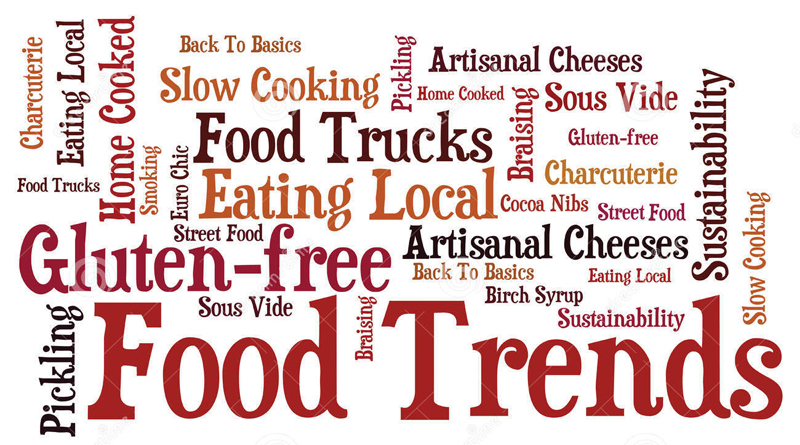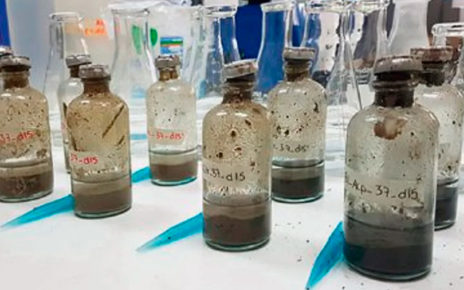Introduction
Predicting food trends is “as much an American holiday tradition as ordering an eggnog latte,” wrote Kim Severson for the New York Times. The problem is that, once you examine many of the sources for these predictions, you notice that many come from PR firms and food marketers intent on creating a spotlight for their products. In other words, you can’t take trend prediction lists too seriously.
But they are undeniably fun! Who doesn’t love guessing what the future will hold, especially when it comes to food? And so TreeHugger will enter the fray, too, with our own list of predicted food trends for 2017. Rest assured that these come from our own experiences and opinions, not from any PR pitches.
DIY: pickling, fermenting, gardening
The past year has been a rough one for many people, and it seems that many of us are looking for opportunities (and excuses) to hunker down and hole up at home. In the words of TreeHugger’s managing editor, Melissa Breyer, “People are likely to gravitate toward stories where comfort and sustainability connect – positive actions that make them feel good and protected, while being proactive.”
Recipes for pickling vegetables abound online and in food magazines, whether preserving through traditional methods or using quick pickling techniques. Foods like sauerkraut, kimchi, and kombucha, already common household names, continue to grow in popularity. People are starting to experiment further, making their own mead, yogurt, paneer, and tofu at home.
The DIY trend is extending beyond the kitchen to balconies and backyards, where growing one’s own food is become more common. Schools are incorporating vegetable patches into their yards and curriculum. People have experimenting with vermiculture, with bokashi composting, with small household-sized hydroponics units.
The whole gamut of yogurts
The yogurt aisle in the grocery store is a cornucopia of gastronomical pleasures. There’s so much more than plain cows’ milk yogurt now for sale. You can buy Greek yogurt, labneh (thickened strained yogurt traditionally used in Middle Eastern cooking), Icelandic skyr (the fastest growing segment of the yogurt market in recent months), and kefir. There are plenty of delicious non-dairy alternatives, like coconut, almond, and rice milk yogurts.
Brands are replacing low-fat yogurts with full-fat varieties, as public opinion shifts to match the research showing that fat is not the villain we once thought it to be, and there is such thing as good fat!
Alternative proteins
As awareness grows about the ecological impact of meat, many individuals are shifting their diets toward plant-based proteins. This change appears to be happening across the board, from main courses (tofu, seitan, tempeh are becoming easier to find, with more delicious recipes available), to protein powders (made of pea and hemp proteins), to snack foods (like roasted chickpeas). Dare I say it’s becoming cool to be vegetarian or vegan, in a way that it never used to be?
Insects are creeping and crawling onto the culinary stage. Several years ago it would have been rare to come into contact with edible insects, but now it seems that most people have at least one story about a run-in with crickets, mealworms, or the like. Over time, the idea of edible insects – still so uncomfortable – will eventually be normalized.
High-tech diet
Increasing attention is being given to the role that technology can play in preserving our food supply system. This was obvious to me during a recent trip to Israel (courtesy of Vibe Israel), where I encountered companies doing all sorts of interesting food-related research. Some of these are:
– Developing a device to detect contamination in drinking water by a company called Lishtot
– Hydroponics, both on a large scale and at home
– A little water-bound robot named ‘Eddy’ that floats in soilless gardens and allows home-growers to monitor remotely what their gardens need and share tips with the global community (pictured above)
– SuperMeat’s work to grow 3-D ‘meat’ that’s biologically identical to real meat, but does not harm any animals
Biotech companies like Impossible Meats and New Wave Foods are developing fascinating meat alternatives — respectively, a bloody veggie burger and algae-based shrimp. They have developed prototypes that will hopefully hit mainstream markets in 2017.
On an entirely different note, more basic technology such as online grocery shopping is easier to find. This is promising for the many individuals who struggle to shop in person on a regular basis and will hopefully bring fresher foods into their diets.
“Garbage is my thing!” and other conversations about waste
I love that line from Woody Allen’s classic film, Annie Hall, because so often, I do feel like garbage – or waste – is my thing, considering how much time I spend thinking about it. And finally I no longer feel alone! People began talking a lot more about waste in 2016 and I’m hopeful that interest will continue to grow throughout 2017.
There are two parts to the food-related waste conversation. One is the actual, physical food waste that gets thrown away as a result of over-enthusiastic grocery shopping habits, poor food storage, lack of knowledge about what to do with certain ingredients, fussy habits, or misunderstood expiration dates. (Watch ‘Just Eat It’ for a really great film on this topic.)
Second, there’s the huge amount of waste generated by food packaging, and the gradual yet persistent movement toward zero waste. A growing number of people don’t want to pay for trash (a.k.a. packaging) when they buy their food, nor do they feel comfortable throwing it away. Let’s hope this movement really gains some traction in 2017.
Sugar turns bittersweet
Move aside, fat. Now sugar is widely accepted as the real dietary villain. Gary Taubes’ most recent book, “The Case Against Sugar” (2016), makes the convincing case that “sugar is the tobacco of the new millennium: backed by powerful lobbies, entrenched in our lives, and making us very sick.”
It’s not entirely new; the Paleo and Primal crowds have been saying this for a few years, but now recently unearthed documents show how the Sugar Research Foundation paid Harvard scientists in 1967 to “minimize the link between sugar and heart health and cast aspersions on the role of saturated fat.”
Taxes on sugary beverages can now be found in many places, including Mexico, Barbados, Philadelphia, and Berkeley, California. Anecdotally, I know several people who are on sugar-free diets and swear by the wonderful way it makes them feel.
Source: Treehugger









